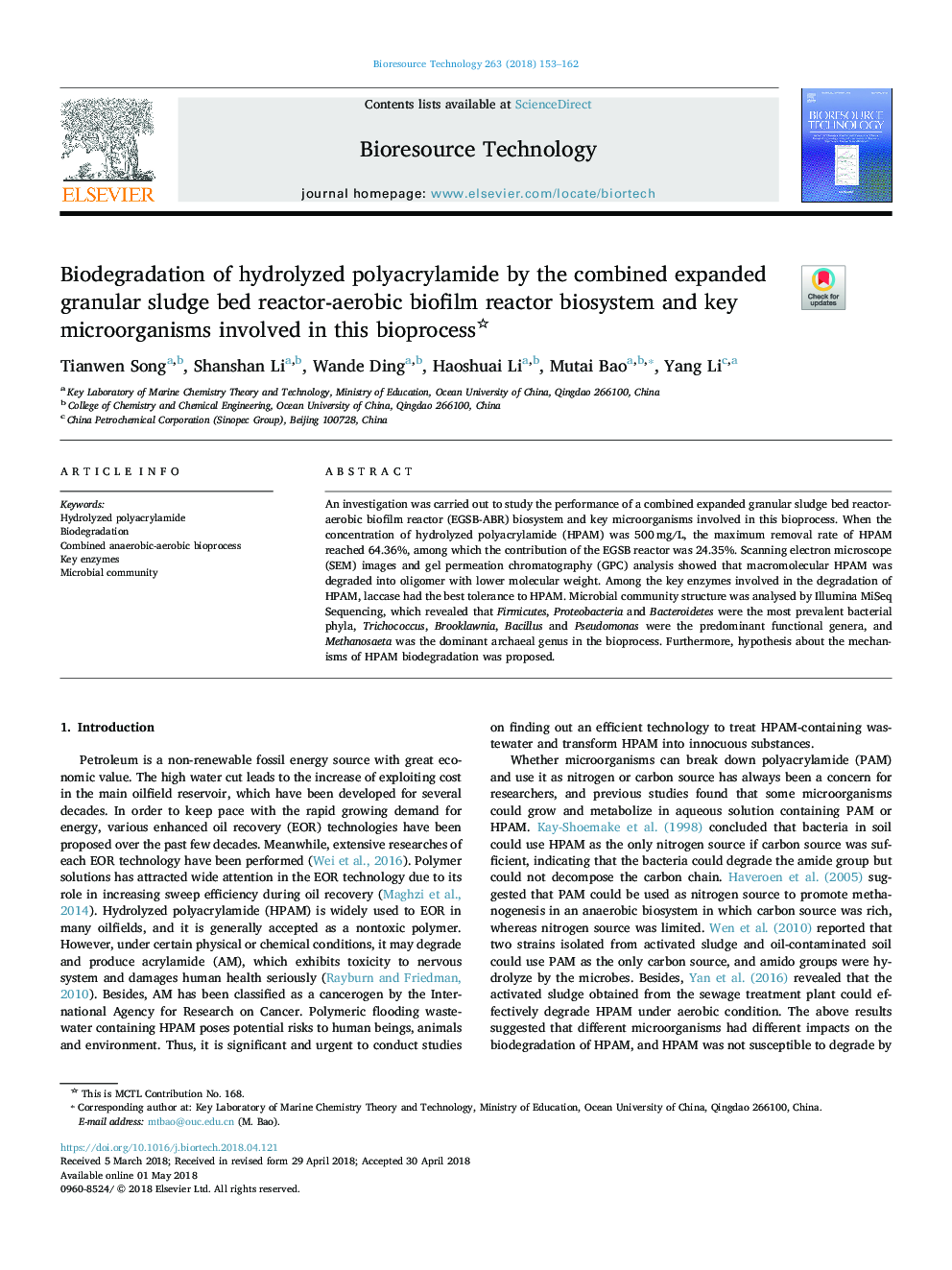| Article ID | Journal | Published Year | Pages | File Type |
|---|---|---|---|---|
| 7066554 | Bioresource Technology | 2018 | 10 Pages |
Abstract
An investigation was carried out to study the performance of a combined expanded granular sludge bed reactor-aerobic biofilm reactor (EGSB-ABR) biosystem and key microorganisms involved in this bioprocess. When the concentration of hydrolyzed polyacrylamide (HPAM) was 500â¯mg/L, the maximum removal rate of HPAM reached 64.36%, among which the contribution of the EGSB reactor was 24.35%. Scanning electron microscope (SEM) images and gel permeation chromatography (GPC) analysis showed that macromolecular HPAM was degraded into oligomer with lower molecular weight. Among the key enzymes involved in the degradation of HPAM, laccase had the best tolerance to HPAM. Microbial community structure was analysed by Illumina MiSeq Sequencing, which revealed that Firmicutes, Proteobacteria and Bacteroidetes were the most prevalent bacterial phyla, Trichococcus, Brooklawnia, Bacillus and Pseudomonas were the predominant functional genera, and Methanosaeta was the dominant archaeal genus in the bioprocess. Furthermore, hypothesis about the mechanisms of HPAM biodegradation was proposed.
Related Topics
Physical Sciences and Engineering
Chemical Engineering
Process Chemistry and Technology
Authors
Tianwen Song, Shanshan Li, Wande Ding, Haoshuai Li, Mutai Bao, Yang Li,
